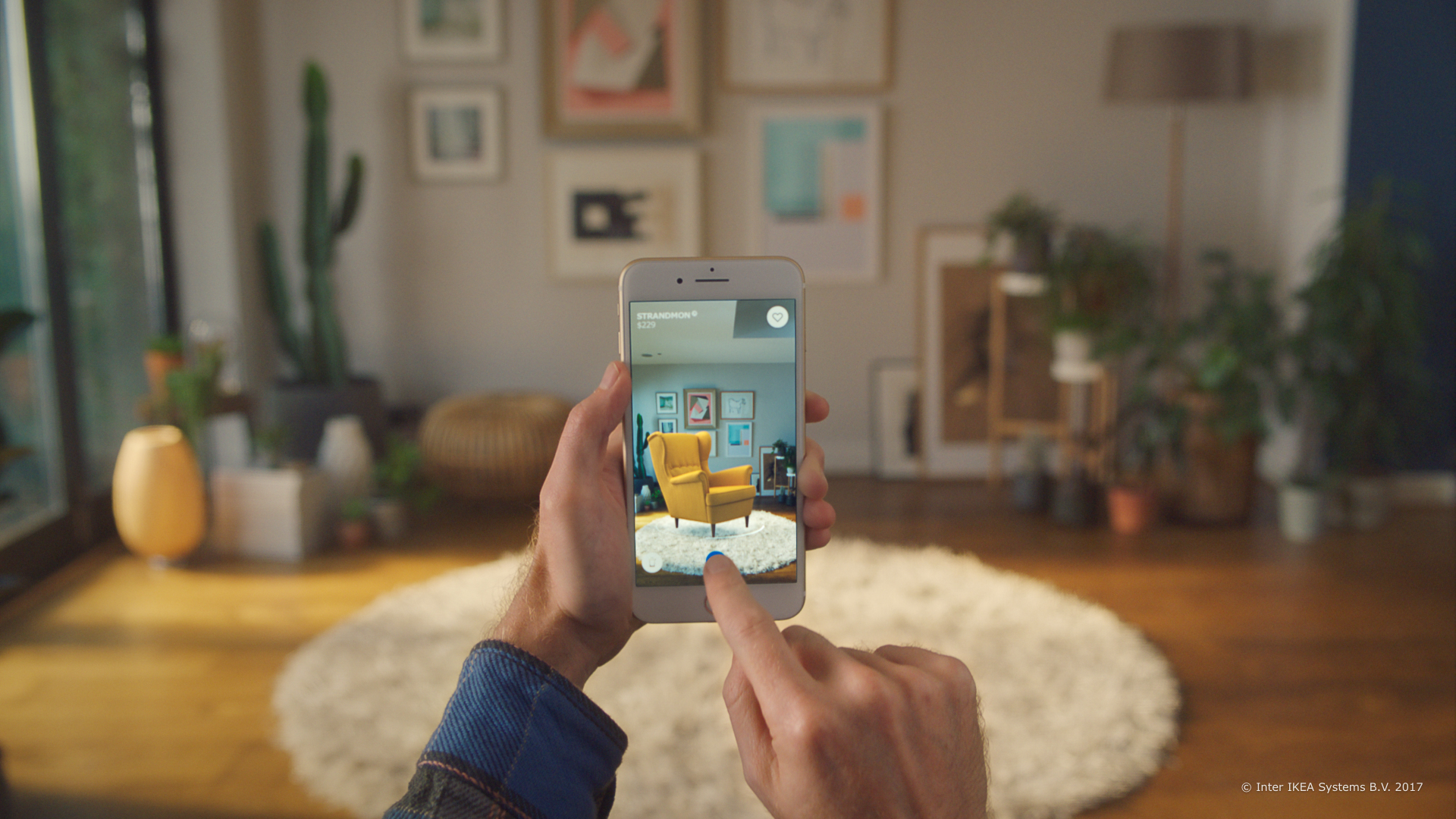Wir haben leider kein passendes Ergebnis gefunden.
How Augmented Reality will change e-commerce


Augmented Reality – it’s more than fun!
There is little doubt that Augmented Reality (AR) is one of the major new developments in the tech industry. At least since the Pokémon Go Boom, AR should have been made socially acceptable. But Augmented Reality should not be confused with Virtual Reality. While Virtual Reality deals with a computer-generated, interactive virtual environment, AR refers to the linking of the real environment with virtual objects. Consequently, it is about a digital extension of the human perception of the environment.
Nevertheless, Augmented Reality often gives the impression of being a gimmick that is not able to cover the really relevant usage scenarios. But this is not the case! If, for example, AR is combined with e-commerce, new possibilities arise which can improve the user experience of online shopping in the long term.
Because Augmented Reality brings reality to the user's shopping scenario. How often have you thought while looking at product images on an online shop: "This looks quite nice, but does it really fit into my home? A brief doubt - and the purchase was postponed for the time being. By linking the two worlds (online and offline) through AR, uncertainties of this kind can be eliminated. The user is thus offered the opportunity to become more familiar with the product, to get to know it, to think about the ownership and use of the product in a concrete way.
The advantages of AR in e-commerce
What advantages can be derived from linking AR with e-commerce?
Advantages from the user perspective:
A significantly better shopping experience:
- More fun to use
- A better basis for decision-making
Higher conformity with expectations after delivery of the product
Advantages for companies:
Higher conversion rates/ lower termination rates due to product fit uncertainties
The higher level of expectation conformity with regard to the delivered product ideally also leads to fewer returns.
Brand values with regard to the degree of innovation of the company can initially increase.
What to look for when implementing AR in a shop system
The more functions are offered, the more likely it is that the usability and thus the user experience of a user interface will deteriorate.
These are challenges that need to be taken into account in design and implementation:
The calibration of the object to which AR technology is applied should be fast and reliable.
The navigation paths between product in the shop interface and the AR application must be kept short and must be intuitively feasible.
The placement (if necessary) of the virtual product should be individually adjustable.
The virtual product should look as real as possible.
Finally, the return to the checkout process after AR application must be smooth and feasible without usage barriers.
As can be quickly seen from the above points, a variety of challenges arise when implementing AR in an online shop. If these are not met, the integration of Augmented Reality could become the show stopper of an online shop. Performing UX tests with potential users can remove unwanted usage barriers and should therefore be included in the development cycle.
Augmented Reality in E-Commerce: Case studies
Ikea
Ikea took up the topic of augmented reality in e-commerce at an early stage. It is also absolutely understandable that the user demand for the product fit will arise more often when shopping online via Ikea. Ikea has developed an app for this purpose, which allows users to place all the furniture available in the online shop directly in their living room.
We thought about buying another chair for our test room and tried out the app directly. Although the result is not yet optimal, it still offers a good reference point and is very helpful in the decision-making process.
Sephora (cosmetics), Mister Spex (glasses) or Amazon have also taken up the topic of augmented reality.
Sephora
Our colleague Anna has tried the app from Sephora:
Strengths of the Sephora app:
- The calibration and application of the selected cosmetic products works well and is realistic.
- The app offers a wide range of setting options.
Weaknesses of the Sephora app:
- The poor clustering of the settings makes it difficult to find suitable products.
The photos have a poor resolution after AR application. The probability of discussing AR configurations with friends and acquaintances is reduced. This also indirectly reduces the recommendation rate of the app and the product.
Mister Spex
Mister Spex
We also took another look at the application of Mister Spex (accessible via the button "Virtual try on" on the respective product detail page) and made the direct comparison: glasses in the original vs. virtual glasses.
All in all, the use of Mister Spex offers a good clue to the shape of the glasses. Easy to recognize: the color scheme is slightly different in the original. A big drawback is that the AR application cannot be called up on the mobile website.
Augmented Reality in stationary retail
However, Augmented Reality does not only leave its mark in online trade. Stationary trade can also profit from Augmented Reality and reinvent itself. For example, additional information on products that have been squeezed into tight shelves can be displayed on the smartphone screen. Using an app and beacons, customers in a grocery store could be guided to the ingredients of a recipe. Arrows on the floor would indicate the direction and enable efficient shopping. Further product recommendations could also be displayed.
However, AR appears to be tending to gain a stronger foothold in online retailing. The differences in technology affinity between online and offline shoppers alone suggest this assumption.